The Renaissance of Downtown Fort Myers, Florida
A Study of Partnership between Planners and Developers
![]()
A phalanx of high rise condominiums growing along the shores of the Caloosahatchee River is proof that the Urban Ecology of Fort Myers, Florida is changing! As the condos rise, they offer residents a real urban lifestyle; a place where people can live and work downtown so their commute to the office can be a pleasant walk and a place where they can meet their daily shopping needs while leaving the car at home. As this urban population grows, parks and schools will become available so families can choose urban living, too.
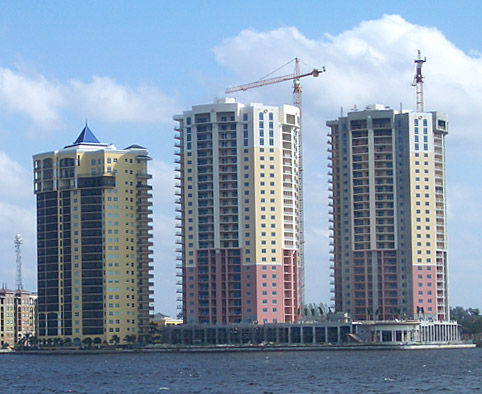
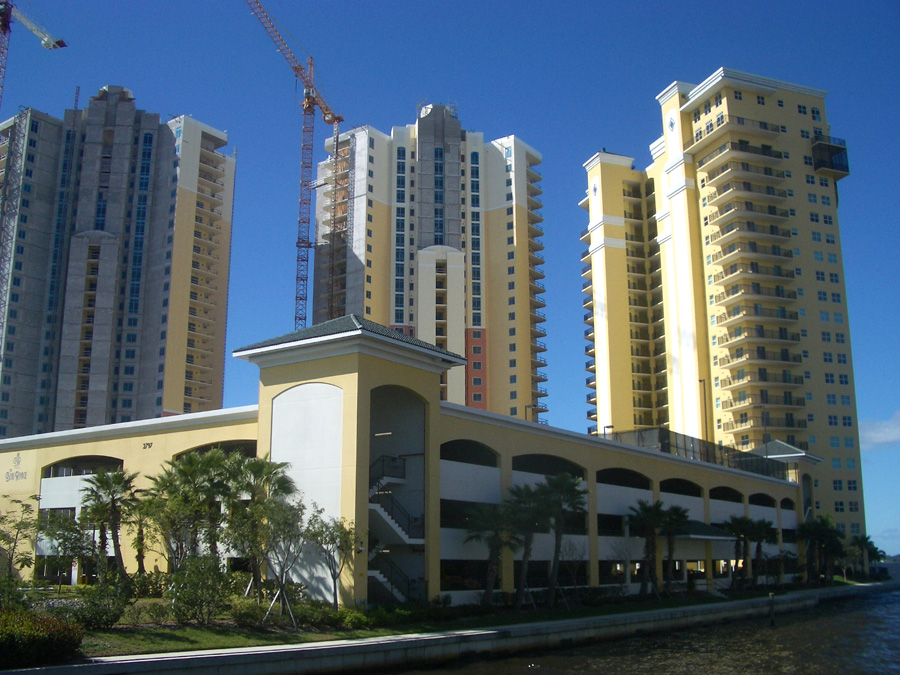
A walk along First Street reveals the vitalization that is happening in the heart of the historic downtown. Newly spruced up and renovated two to five story vintage buildings offer retail shopping, sidewalk dining and convenient offices at street level and professional offices and residences in the upper stories. Extensive streetscaping including brick paving of crosswalks and along sidewalks, plus the addition of street furniture and vintage lighting is in process to enhance the pedestrian experience. In addition, improvement of infrastructure will ensure adequate water, waste water, power and communications services for new residents.
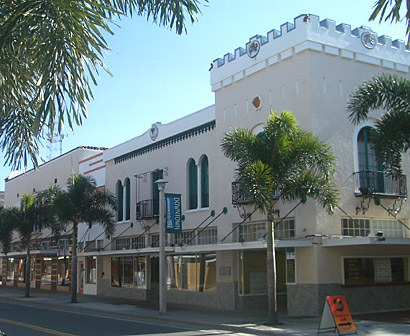
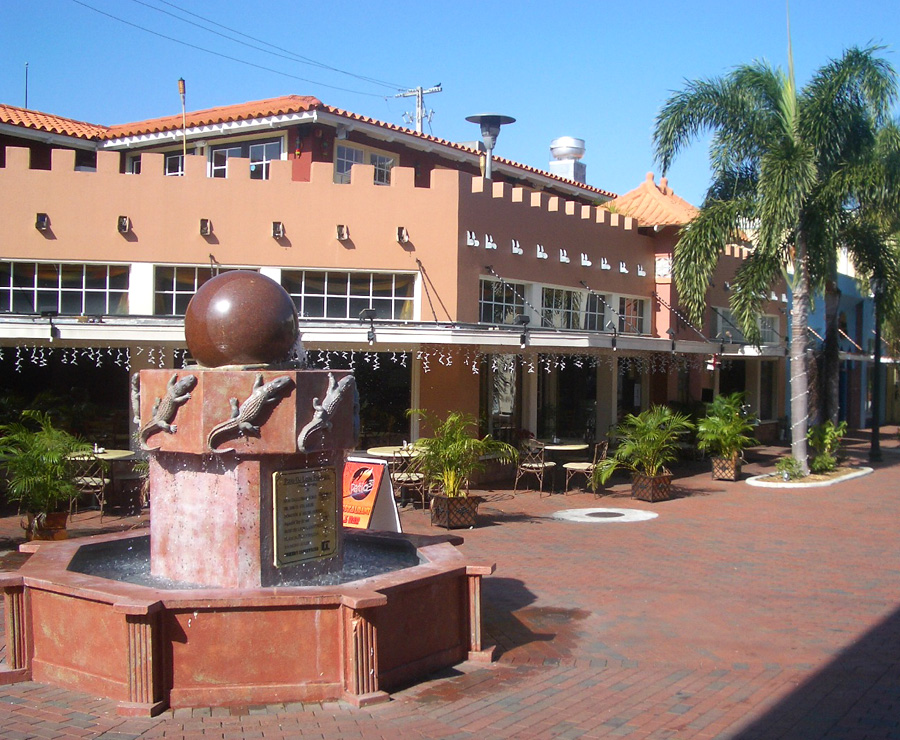
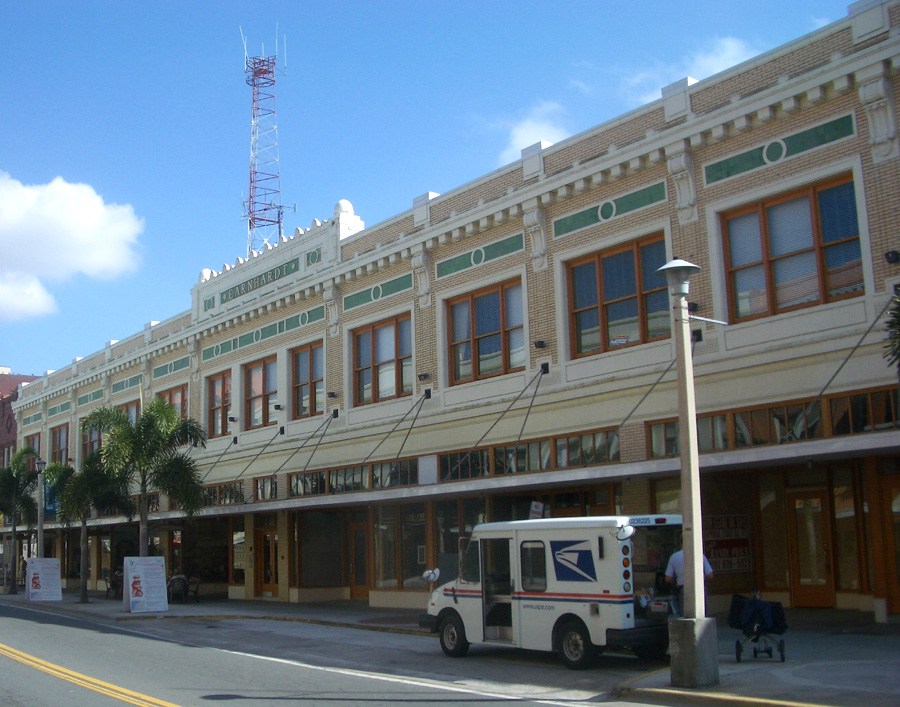
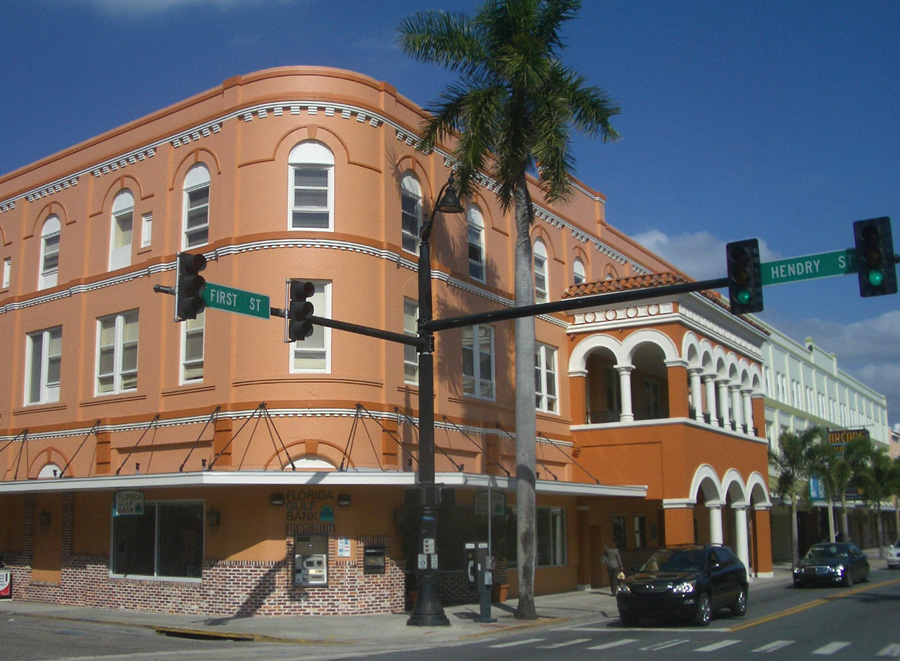
To learn more about these dramatic changes, the authors met with Don Paight, the Executive Director of the Fort Myers Redevelopment Agency (FMRA). We learned that the River District, an area that includes the Fort Myers historic downtown core plus areas along the river to the east and west, has been the subject of an extensive planning initiative that is now being implemented. Paight explained that, in the late 1990s, the City embarked on an effort to recognize its historic assets and to prepare to take advantage of opportunities for downtown revitalization guided by Andres Duany, the famed new urbanist. This effort began with a nine day charrette in November, 2001, during which over 500 residents, government leaders and major stake-holders of the City of Fort Myers attended public presentations, roundtable discussions and stakeholder meetings to contribute their knowledge and ideas for the future downtown.
Members of the Duany Platter-Zyberk & Company Team (DPZ) met with large groups of stakeholders to identify challenges and issues including parking, traffic, retailing, real estate development, arts and culture, historic preservation, public works and the waterfront. Dozens of individual meetings were held to examine property ownership and the limitations and opportunities connected with specific sites throughout the downtown. The information gained through this process was utilized by the DPZ Team to draft a plan document, Downtown Fort Myers, that sets forth a new way of approaching urban planning and development. As stated in the Executive Summary, “[the approach] views the collaboration of public and private actions as a continuous and evolving process that began months before the charrette and will continue for years to come. Its aim is to identify general initiatives and specific projects that will maximize private investment while enhancing the public realm of downtown.” The authors suggest that the plan should evolve as conditions change and projects are executed.
Accompanying the plan document were three additional documents:
- The Smart Code, which comprised a guide to implementation of the plan to be implemented as a replacement to existing zoning code relating to downtown.
- Fort Myers Retail Analysis, an analysis of the Fort Myers trade area, demographic trends, downtown retail trends, and the competitive position of the downtown relative to the regional retail centers.
- The Downtown Fort Myers Streetscape Plan, that addressed downtown aesthetics with a specific focus on landscape, street furniture, lighting, signage and other details recommended to improve the pedestrian environment in the heart of downtown.
The plan document, 'Downtown Fort Myers', was presented to the City in April, 2002 and it was adopted on April 7, 2003. The Smart Code was enacted as an ordinance to amend the City’s Growth Management Code in September, 2005. With these documents, the City of Fort Myers has put in place the policies needed to move forward with the vitalization of the Downtown as envisioned by Andres Duany and the DPZ Team.
With this policy framework established, the development community came forward to respond. Plans for several condominium projects along the riverfront were submitted for approval. These project designs take advantage of the “density bonus” system created by the Smart Code to qualify for additional units on a site thereby increasing the economic viability of these projects. A project gains density bonus points by including liner buildings at the street level to enhance the pedestrian environment and public space along the riverfront to create pleasant places to walk and dine and facilities for boats to dock. Additional bonus points can be won by contributing to a community hurricane shelter fund, a fund for workforce housing, and a fund for downtown transit.
The resulting approved designs include condominium towers of 30 plus stories several of which are already modifying the skyline of the River District, and more are to come. A total of 3,800 units are approved with 1,500 currently under construction. Meanwhile, the City and Lee County provide encouragement by locating most offices in the heart of downtown to bring the all important jobs to the area. About 8,500 people work downtown each day. Fun downtown events such as Art Fest, ‘Rock til You Drop’ Car Show and Concert, ‘Light up the Town’ Edison Festival and the weekly Farmers Market bring people to the River District while The Ford and Edison Winter Estates, The Imaginarium, Southwest Florida Museum of History, and Florida Repertory Theatre all contribute to the District’s vitality.
The next phase is recruitment of businesses to the District. With a critical mass of residents, visitors and workers, the stage is set for creation of a true shopping district. The First Street Village project is expected to provide significant momentum through a mixed use development that includes 356 residential units, 40,000 square feet of office space and nearly 100,000 square feet of retail featuring a Publix grocery store, an essential ingredient for truly urban lifestyles.
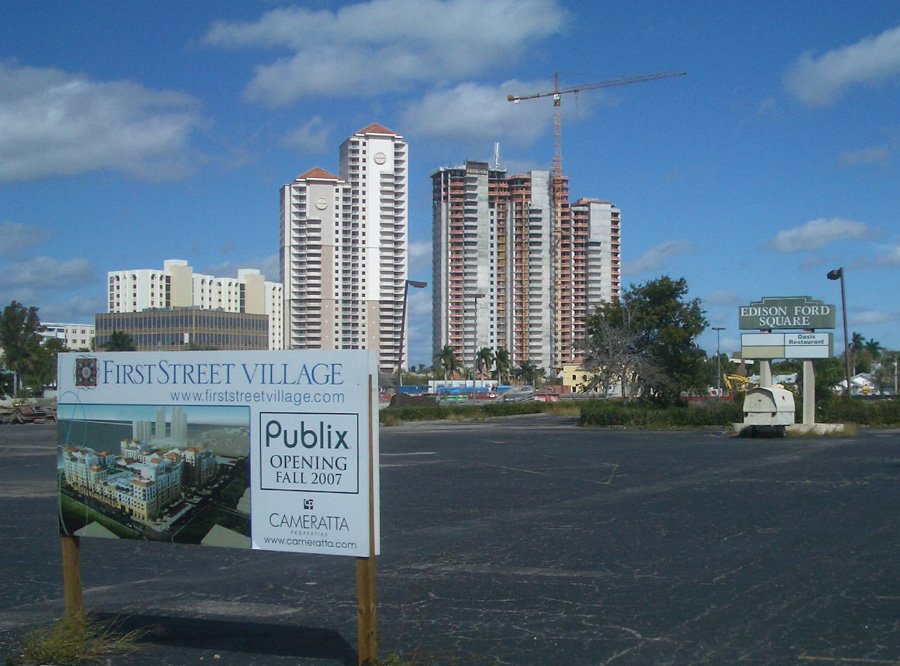
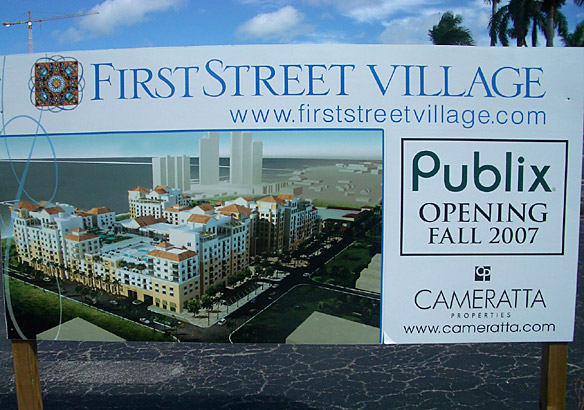
A trolley system to connect the downtown with the new developoment to the east and west is also being planned. Meanwhile, committed private developers are investing in projects to redevelop historic buildings to enhance the heart of downtown.
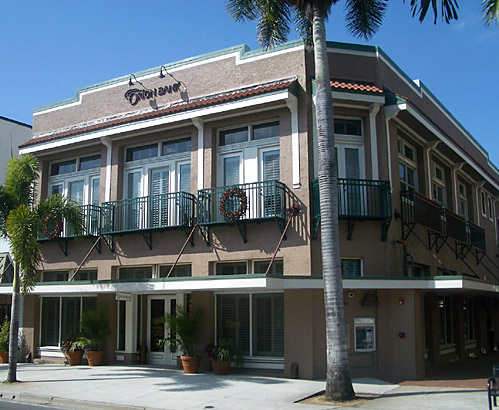
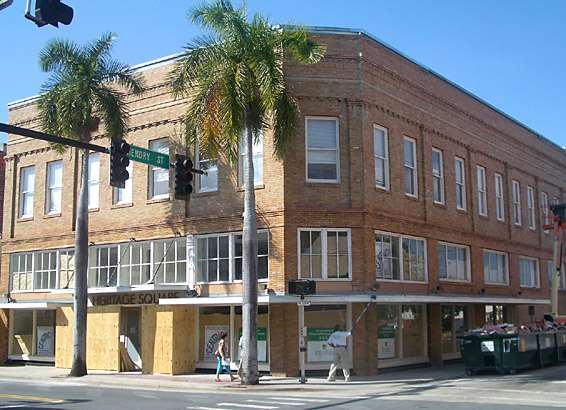
Another innovative project is Trinity Village, a redevelopment project sponsored by three area churches, which would create a campus with large oak trees, covered walkways, courtyards and a gazebo offering retail and commercial office space, senior and workforce housing, a cafe, green space, a Christian school, an 800 seat fellowship and dining hall and a 600 plus car parking structure. There is even a possibility that a performance space to be the home for the Southwest Florida Symphony may be included in this project. Paight reported that all three church congregations have approved the concept and are moving forward with the planning process.
The FMRA is leading a planning process to decide how to utilize City-owned property along the waterfront as well as the Harborside Event Center. Under consideration are an expansion of the Event Center along with a convention quality hotel to encourage small conventions to come to Fort Myers. Other ideas include relocating the boat ramp and its parking lot to make room for green space and an open air amphitheater, art exhibit space, performance space, and waterfront dining. We trust they will find a proper home for the sculpture of Edison and his friends.
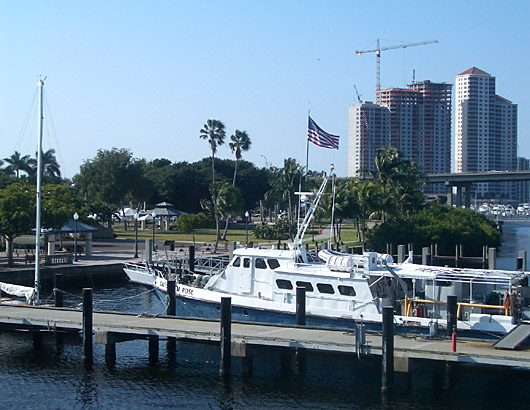
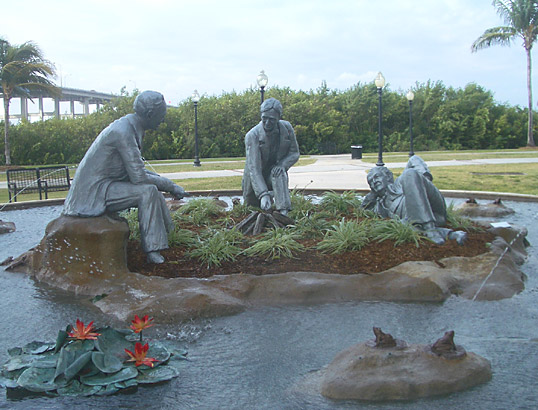
But what is it like to live in the River District? The high rise condos, restaurants and shops are trendy and stylish, but the life in the District feels like a real old fashioned community according to loyal residents. Residents appreciate that their daily needs are just a walk or a short ride away. Grocery shopping will become even easier when the new Publix store opens at First Street Village and the trolley system is in place. People know their neighbors and business owners recognize their customers. It’s like a big family and everyone believes in the area - they are working to make it succeed.
The renaissance of downtown Fort Myers as the River District illustrates an effective partnership between the Planning Community and the Development Community. This partnership has created the policy framework that enables urban development to occur, offering new choices to home seekers. Now it will be up to the home seekers to choose this urban lifestyle.
How will all this work turn out? Very well, we hope. We plan to visit again soon to see for ourselves.
Click here to return to 'What About Developers' page or
Click here to return to our Searching the World page
![]()